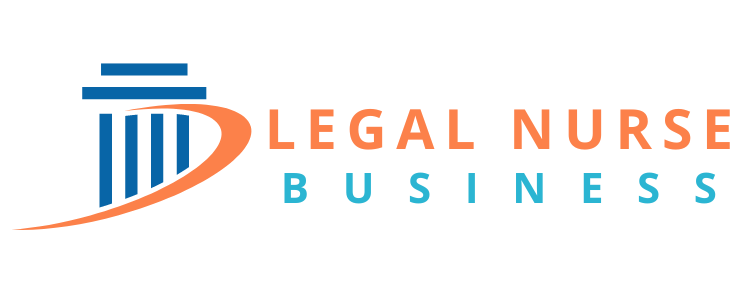Charting Omissions: Not Documented, Not Done
 The cross-examination of the nurse defendant begins with these questions:
The cross-examination of the nurse defendant begins with these questions:
“What is the purpose of clinical documentation?”
“What are the responsibilities of the professional nurse to record in the medical records?”
“I direct your attention to the neurovascular flowsheet for 10-12-23. We’ve established that you were taking care of the patient on that date, correct?”
“What is the purpose of recording the patient’s sensorimotor function?”
“I further direct your attention to the section for recording observations about sensorimotor function. Do you see this section that is blank?”
“You are aware that the patient was diagnosed with compartment syndrome approximately 8 hours after your shift was over, correct?”
“Now Nurse, you’ve heard the expression, “If it is not documented, it was not done?”
If you are like many healthcare professionals or medical malpractice attorneys, you have likely also heard the mantra about charting omissions, “If it wasn’t documented, it wasn’t done.” For those who are not familiar with the phrase, it means that if there is no record of the care delivered to the patient by way of documentation, the activity did not happen.
In health care, this saying is touted by educators of budding professionals to instill the importance of charting key patient care elements. But is the mantra a reality? How does the mantra affect the validity of evidence for medical legal cases? This blog explores these concepts, provides case examples, and synthesizes the findings.
Charting Omissions Mantra Prevalence
The literature that conveys this mantra is prevalent in various fields including nursing, dentistry research. Medicare claim compliance (Glaser, 2017), and construction. While the premise may make sense at face value it falls short of reality when placed in the context of patient care delivery.
While the charting omissions mantra helps to instill the importance of clear, accurate, and timely documentation in the medical record to reflect the components of patient care in all settings, it does not take into account aspects of care that occurred but were not documented.
For example, the conversations among care providers or individual observations in passing a patient’s room, which often do not make it into the medical record, do not negate the fact that they happened. While the saying may be common, it is actually a fallacy for the following reason: It is not a rule of law or evidence, nor a rule of logic
However, medical malpractice lawyers often use the phrase about charting omissions to question a professional’s credibility. They allege and claim inaccurate documentation to convince the jury that essential care was not provided and to call the professional’s overall competence into question. What is often overlooked with this tactic is whether the issue is one that is insignificant or is a care element that is part of the professional’s practice pattern. In both situations, documentation may not be needed.
Situation: The defense attorney sits with a nursing defendant to review the medical record. As they stare at an incomplete flow sheet, they both notice the charting omissions and gaps in charting. The attorney explores the omissions with the defendant.
Consider the implications of lack of documentation when a provider performs care. The provider might have given the care but did not document the specifics
- because of their usual practice to not document that aspect of care,
- because the care details were not clinically significant, or
- but should have documented because the details were
Let’s explore each of these situations.
The Provider Did It But Did Not Document: Professional’s Practice Pattern
Medical defendants may testify that they performed certain actions based on their habit and routine practice and do not document every step of every task or intervention. Some events will be part of the RN’s practice pattern or habit and custom and may be persuasive evidence that they were performed. For example:
- application of blood pressure cuff (the provider always applies blood pressure cuff above the antecubital space over the brachial artery)
- the details of how the sheets were used to position the patient
- operation of the bed controls or bedside table to sit patient up to eat a meal in bed
- the elements of equipment operation that ensure safe care
These examples encompass components of standard protocols that are also part of a person’s practice pattern, habit, or custom. The Federal Rule of Evidence addresses this situation as follows:
The Federal Rules of Evidence, Rule 406, states, “Evidence of a person’s habit or an organization’s routine practice may be admitted to prove that on a particular occasion, the person or organization acted in accordance with the habit or routine practice. The court may admit this evidence regardless of whether it is corroborated or whether there was an eyewitness” .
Therefore, a healthcare professional’s testimony regarding their habit and practice can be adequate evidence to support a query when specific documentation is absent.
The Provider Did It But Did Not Document: Non-significant Charting Omissions
Medical defendants (and expert witnesses) may testify that not every single detail of care has to be or should be documented. If one believes to the contrary, then there would be little time for the care provider to actually provide care. The person would be glued to their documentation device (electronic or other), to record every conversation, observation, and intervention. This leaves little time to deliver care. Instead, what should be documented are those events or aspects of care that are setting-specific and are significant to what is occurring with the patient. This includes (not all inclusive) key care elements that:
- Communicate significant clinical information
- Convey clinical reasoning and critical-thinking elements inherent in the nursing process or medical decision-making
- Record patient instructions and teaching
For example, in the emergency department (ED), the initial documentation should focus on what is happening with the patient in reference to their chief complaint. The documentation should, at minimum, tell the story of why the person sought the ED encounter and the corresponding essential points of care that align with the institutional policies and protocols and the standard of care for the presenting condition
In the case of a patient who presents with a fractured wrist and has no prior medical history, the mechanism of injury, the patient’s pain level, circulation and sensation of the extremity, skin integrity and color, and mobility are essential information (Kelley, 2017).
Neurovascular assessment includes pain, sensation, motor function, and perfusion. While ongoing neurovascular assessment of the affected limb should be performed and documented, the absence of ongoing head-to-toe assessment documentation does not mean the registered nurse (RN) did not look at the patient to see that the person was breathing or was responding appropriately.
In other words, care elements that may not be contextually significant to the presentation do not need to be documented on an ongoing basis. Registered nurses use clinical reasoning, critical thinking, and clinical judgment to continuously assess and evaluate each situation and circumstance and adjust what they document accordingly.
Clinical reasoning is a complex interactive thinking process that uses formal and informal thinking strategies to collect and analyze patient information and interrogate the data and consider alternative actions. Critical thinking is broadly related to clinical reasoning. Critical thinking is an integral cognitive process and disposition that facilitates progression through critical thinking. Clinical judgment is a decision that requires calculation based on step-by-step analysis of the situation.
Simple logic conveys that if you did do something, you cannot undo the action because you did not document. There could be other evidence in the medical record or in deposition testimony that corroborates or clearly conveys it was done. For example, a urinary catheter was inserted by a nurse but not documented. However, the medical record has ongoing urinary output and catheter monitoring documentation. The fact that there was an omission to document the catheter insertion does not equate to it not being done. From the risk management perspective, a question that could be asked is what was the significance of the omission?
From a legal or risk management perspective, it may be critical to explore further why the element of care was not documented. Was the person distracted, overwhelmed, or forgot? Or perhaps the documentation system was cumbersome, e.g. the catheter insertion is documented on a special form or place in the electronic medical record and the urine output documented in another.
Perhaps the nurse was not aware of the separate form in the electronic health record needed to document the insertion but documented the urine output every hour in the area of the electronic record (flow sheets) where other similar ongoing elements of care are documented. In the end, the fact that the catheter insertion was not documented does not negate that one was inserted into the patient.
A slightly different non-significant omission is the case where the RN provided excellent skin care but missed a few entries regarding turning the patient every 2 hours. Perhaps the missed entries were just that, and the patient was actually turned every 2hours. Regardless, there was no issue with skin breakdown. Therefore, from a medical-legal perspective, there would be no reason to single out the omission unless it related to some other type of trend or aspect of care under consideration.
The Provider Did It, But Did Not Document: Significant Omission?
In medical-legal cases, what is not said or omitted in a medical record may be even more important than what was documented.
Buy Medical Records Analysis Volume 3 at this link to read the rest: Click here The chapter. The Mantra: If it Wasn’t Documented, it Wasn’t Done, or Was it?, was written by Mariann F. Cosby, DNP, MPA, RN, PHN, CEN, NE-BC, LNCC, CCM, CLCP, MSCC, CSN, FAEN
Pat Iyer is president of The Pat Iyer Group, which develops resources to assist 
LNCs in obtaining more clients, making more money, and achieving their business goals and dreams.
Have you heard the most recent podcasts on Legal Nurse Podcast? The show is in its 9th year, putting it in the top 1% of all podcasts for its longevity. Watch our podcast on YouTube at http://LNC.tips/YouTube.
Join our Facebook group, LNC Business Growth Circle, to be part of our LNC community.
Pat’s related websites include the continuing education provided on LNCEU.com, the podcasts broadcast at podcast.legalnursebusiness.com, and writing tips supplied at patiyer.com.
Get all of Pat’s content in one place by downloading the mobile app, Expert Edu on the Apple app store or on Google Play for Android phones.
